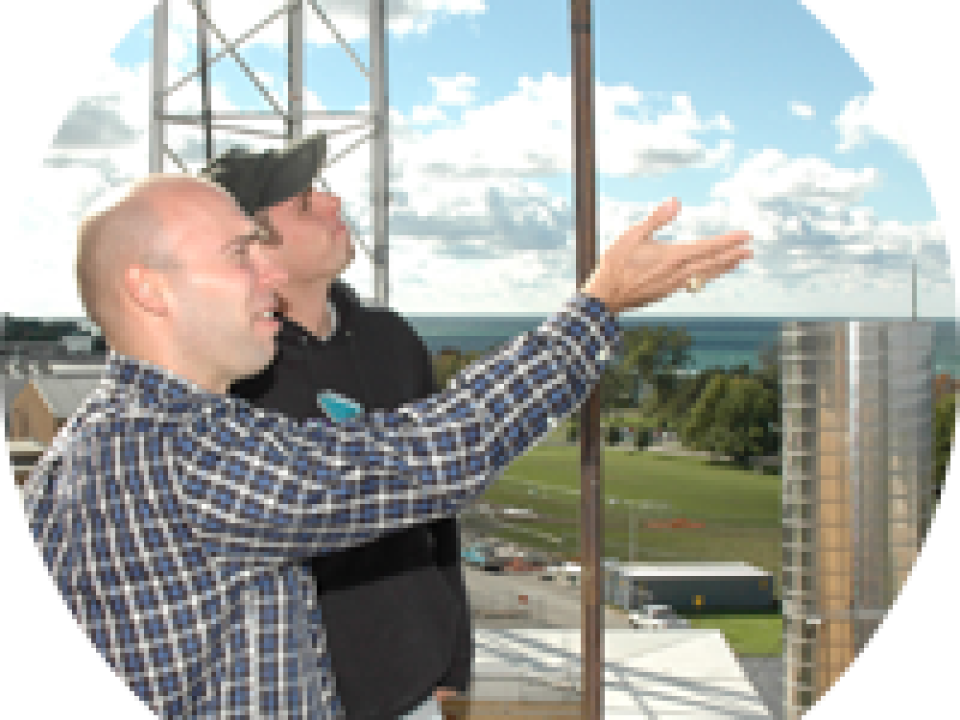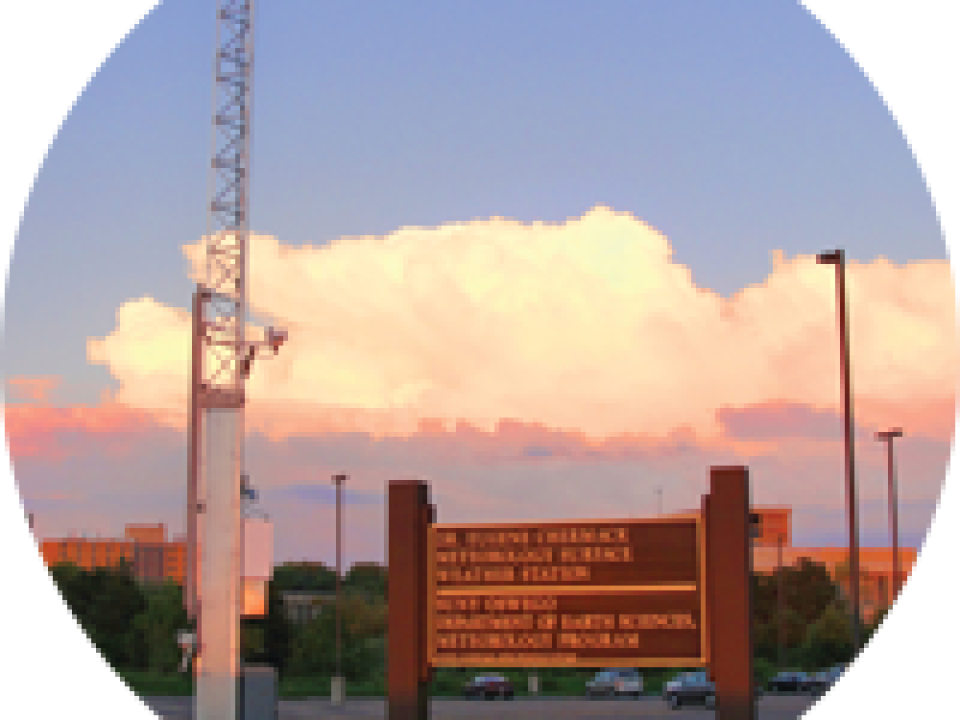Geology
Equipment and labs
The structural geology lab houses petrographic and binocular microscopes, mineralogy and petrology specimens, and a variety of geophysical equipment (magnetometer, resistivity meter). There is also an all new microscopy lab with Zeiss Axio microsopes. Each microscope has a digital camera that allows students to photograph their sample and send the file directly to the instructor.
Our sedimentology laboratory contains a ro-tap and sieving equipment, as well as a variety of hydrological field gear, while the paleontology laboratory houses specimen collections, maps, and microscopes. The geochemistry laboratory contains a Frantz magnetic separator, vented laminar flow bench, a pair of electronic microbalances, and geochemical sample preparation items (Teflonware, trace metal-clean acids, ion exchange columns).
Our computer lab runs the latest versions of ArcGIS, RockWorks, GeoChemist Workbench, Canvas-GIS, and Surfer. Additional space houses rock preparation equipment, including diamond saw, rock splitter, jaw crusher, disk mill, ball mill, tumbler, and lapidary tools. In storage we retain a large collection of field geology and camping gear dedicated to the Geological Field Camp.
Meteorology
The Atmospheric and Geological Sciences Department is housed in the Shineman Science Center. The meteorology program has three outdoor observation decks and one internal observation room with glass walls facing north and west over the lake. Weather observation equipment constantly monitors changes in the weather both on campus and through a local meso-network. In addition, the meteorology program has a software program, GARP, that displays current weather, model forecasts, satellite and radar imagery, and a host of additional meteorological information.


